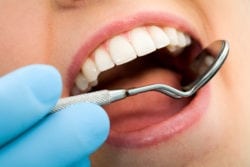
Our teeth are essential for chewing and play a major role in shaping your mouth and face. Your smile is made up of your teeth which you use to make a good first impression on others. Yet many people can’t tell the difference between a canine and an incisor.
Drs. Dominic Roppa and Dr. Kara Marshall-Roppa of Smile Viera, a respected dental practice in Viera, FL, would like to take a moment to educate their patients about the four different types of teeth in their mouths.
Primary vs. Secondary Teeth
We humans grow two sets of teeth in our lifetime: the primary teeth and the secondary teeth. The primary teeth are more commonly known as the “baby teeth” because they begin coming in when we’re still babies — only about six months old — and are usually all grown in by the time we are three years old.
The secondary teeth, also known as the “adult teeth”, begin to emerge as the baby teeth fall out. The adult teeth normally show up between the ages of six and twelve. The average adult person usually has 32 teeth but there are different kinds of teeth.
Your teeth are shaped differently and have different jobs depending on where they are situated in your mouth. Just like the players on your favorite football team, each tooth plays its’ own position but they work together as a team to chew your food.
The Types of Teeth
Incisors: These are the eight teeth located in the very front of your mouth. We have four incisors on the bottom and four on top and we use them primarily for biting off pieces of food.
Canines: Canines are named after the fangs of a dog due to their sharp, pointy appearance and are used to rip and tear food. We have four canine teeth, two on top and two on the bottom, one on either side of our incisors.
Bicuspids: These teeth, also known as pre-molars, are used for chewing and grinding up our food. We have four bicuspids, two on the top row and two on the bottom, one tooth on either side of the canines.
Molars: Molars are flat-topped teeth at the rear of your mouth instrumental in chewing and grinding. There are two molars on either side of your mouth on both the top and bottom arch of teeth, making eight in total. Molars are very vulnerable to tooth decay because they are used constantly but can be difficult to clean thoroughly.
Many people also grow third molars, more commonly called “wisdom teeth” due to their late arrival in the early twenties or late teens (although how wise really are then is up for debate). Four third molars usually emerge, one each side, top and bottom. Wisdom teeth that do not emerge will usually require surgery to remove before they cause pain and/or infection. Your wisdom teeth, like your other molars, are especially susceptible to tooth decay due to their location at the very rear of the mouth.
Comprehensive Dental Care in Viera, FL
Now that you know you teeth a little better, you will be better able to communicate with Dr. Roppa or Dr. Marshall-Roppa when you may be having a problem. For example, if you have pain in the rear of your mouth when you chew your food, you may be having an issue with one of your molars. At the very least, maybe you now appreciate the different roles your teeth play in biting and chewing your food. It’s been said that a good team is only as strong as its weakest player, so it’s important to keep all your “players” in top shape by scheduling and keeping regular cleanings and exams at Smile Viera in Viera, FL. To schedule an appointment today, call (321) 614-3833 or request an appointment online.
